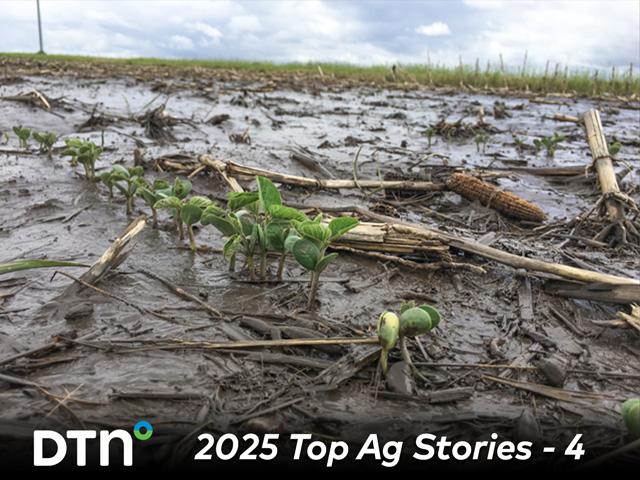South America Calling
Showers Possible in Argentina Late Next Week, Amounts Uncertain
Crop conditions are starting to fall in Argentina. Based on data released by the Buenos Aires Grain Exchange (BAGE), those ratings are still high but have come down a bit over the last week. Good-to-excellent ratings on corn have fallen five points from 96% to 91%, while soybeans fell four points from 96% to 92%. See the data here: https://www.bolsadecereales.com/… .
Those are still very high numbers, but social media reports are starting to suggest those numbers may not be all that accurate and are only playing catchup to the real situation on the ground. The Rosario Grain Exchange is more pessimistic, posting on X Friday morning that almost half of Argentine corn in the core region is in fair-to-poor condition, an increase from 15% a month ago. See the social media post on X here: https://x.com/… .
Soil moisture is certainly falling. BAGE has two measurements for soil moisture, one for corn areas and one for soybeans. They are not the same areas but show soil moisture actually increased over the last couple of weeks over corn areas, which does not make much sense. However, it has dropped significantly for soybean areas, which makes more sense. According to the report, the amount of corn is only 6%, while for soybeans that number is over 23%. While no concrete data was available, images from USDA in the region show increasing dryness region-wide over the last couple of weeks. Read the report here: https://ipad.fas.usda.gov/… .
P[L1] D[0x0] M[300x250] OOP[F] ADUNIT[] T[]
The situation is not getting better in the short term, either. Almost complete dryness is forecast for the country through Jan. 15, though some lucky areas across the far south may end up with an isolated shower over the weekend. However, there may be some improvement later in the week. One or two fronts are forecast to move through the country later next week and could bring scattered showers through the country. It may not be as timely as needed but would be helpful if it does occur.
However, models are not totally in sync about the coverage or intensity of the rainfall. Over the last couple of days, the European ECMWF model has shown showers between Jan. 16-20 but isolated with amounts generally between 10-20 millimeters (0.4-0.8 inches). The GFS in contrast has the same timing, but about double the amounts in the 20- to 30-mm (0.8-1.2 inch) range. The difference is small but significant as a widespread 25-millimeter (1 inch) rainfall event would go much further than half of that, especially as early planted corn is going through pollination and grain-fill.
Even with this rainfall, it will have been about three weeks since meaningful rain fell in the country, a long period of waiting while soil moisture was tentative to begin with and temperatures have been north of 32 degrees Celsius (90 degrees Fahrenheit) all week, which continues next week as well. Some damage has likely occurred already, but it could be mitigated with timely rain late next week.
What can't happen is for this period to be the end of the rainfall. Again, the models are mixed with the European more suggestive of better-than-normal rainfall over northern areas, but near-normal rainfall over the more productive central and south for the end of January going into February. Meanwhile, the GFS suggests more rain later next week and weekend, but less rain for late January and early February than the European model. So, even if rain does occur next week, the issues surrounding Argentina's crops are not going to go away.
To find more international weather conditions and your local forecast from DTN, visit https://www.dtnpf.com/….
John Baranick can be reached at john.baranick@dtn.com
(c) Copyright 2025 DTN, LLC. All rights reserved.




